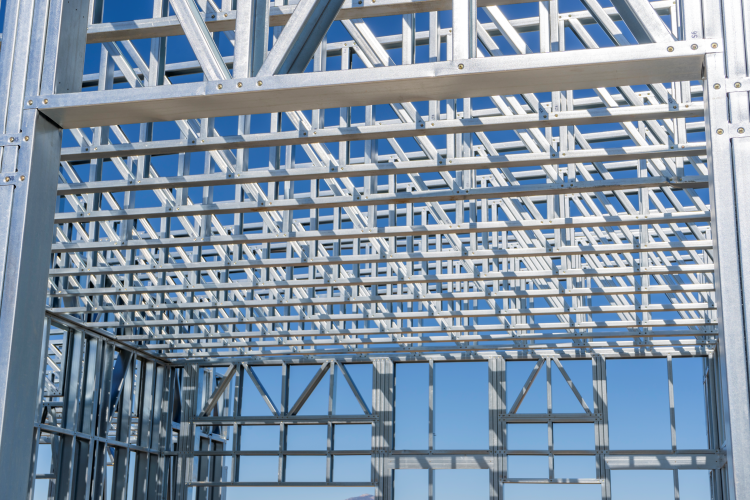Introduction
In the realm of residential construction, the impact of natural disasters cannot be underestimated. From hurricanes/cyclones and tornadoes to earthquakes and wildfires, various regions in the United States face the constant threat of Mother Nature's fury. In such high-risk areas, the choice of construction materials becomes paramount to ensure the safety, durability, and resilience of homes.
The strength of steel frame homes offers a solution, providing enhanced resistance to extreme weather conditions while maintaining structural integrity over time.
One material that stands out as a game-changer in disaster-prone zones is steel framing. In this article, we will delve into the numerous benefits of using light gauge steel (LGS) framing in US residential construction, outlining why it should be the material of choice for developers aiming to build homes that are resilient against the forces of nature.

Unrivalled Strength and Durability
Steel is renowned for its unparalleled strength and durability. Unlike traditional wood framing, steel framing is resistant to warping, twisting, and shrinking, ensuring that the structural integrity of a building remains intact even under extreme conditions. This characteristic is especially crucial in areas prone to earthquakes or high winds, where the stability of the structure can make the difference between minimal damage and catastrophic failure.
Resistant to Termites and Decay
One of the common issues faced by US residential developers, especially in humid or damp climates, is the threat of termites and decay affecting wooden structures. CFS framing eliminates this concern. Steel is not susceptible to pests, such as termites and does not rot or decay. This resilience ensures a longer lifespan for the building, reducing maintenance costs and the need for frequent repairs. Steel framing's resistance to water not only expedites the construction process but also eliminates the need for delays caused by waiting for the structure to dry after periods of rainfall.
Fire Resistance
In areas prone to wildfires, the fire resistance of steel framing is a significant advantage. Unlike wood, which is highly flammable, steel does not contribute to the spread of fires. This can be a crucial factor in protecting homes and communities from the devastating effects of wildfires, providing residents with an extra layer of safety.
Consistency and Precision
Steel framing components are manufactured with precision and consistency. This ensures that every piece meets strict standards, reducing the likelihood of construction defects. The accuracy and predictability of steel framing components contribute to faster construction timelines and decreased material waste, making it an efficient choice for developers.
Sustainability and Recyclability
Beyond its strength and durability, steel is also an environmentally friendly choice. It is one of the most recycled materials globally, with a high recycling rate. Using cold formed steel framing in residential construction aligns with sustainable building practices, appealing to environmentally conscious homeowners.
Design Flexibility
CFS framing offers architects and developers greater design flexibility. The material's strength allows for more open and expansive living spaces without the need for extensive support columns. This not only enhances the aesthetic appeal of the homes but also provides architects with the freedom to create innovative and resilient designs.
 |
 |
Summary
The benefits of using steel framing in US residential construction in disaster-prone areas are undeniable. The material's strength, durability, resistance to pests and decay, fire resistance, consistency, sustainability, and design flexibility make it an ideal choice for developers committed to building homes that can withstand the challenges posed by natural disasters. Investing in steel framing is not just a practical decision, it's a step toward creating homes that prioritize safety, longevity and environmental responsibility. As the demand for resilient housing continues to grow, steel framing stands out as a key solution for residential developers aiming to build homes that can weather the storm, literally and figuratively.
You may also be interested in reading Stronger and Straighter Steel Frame Homes and the Health Benefits of Steel Framed Homes and Steel Framing and Social Responsibility.
Discover more in our residential eBook.








